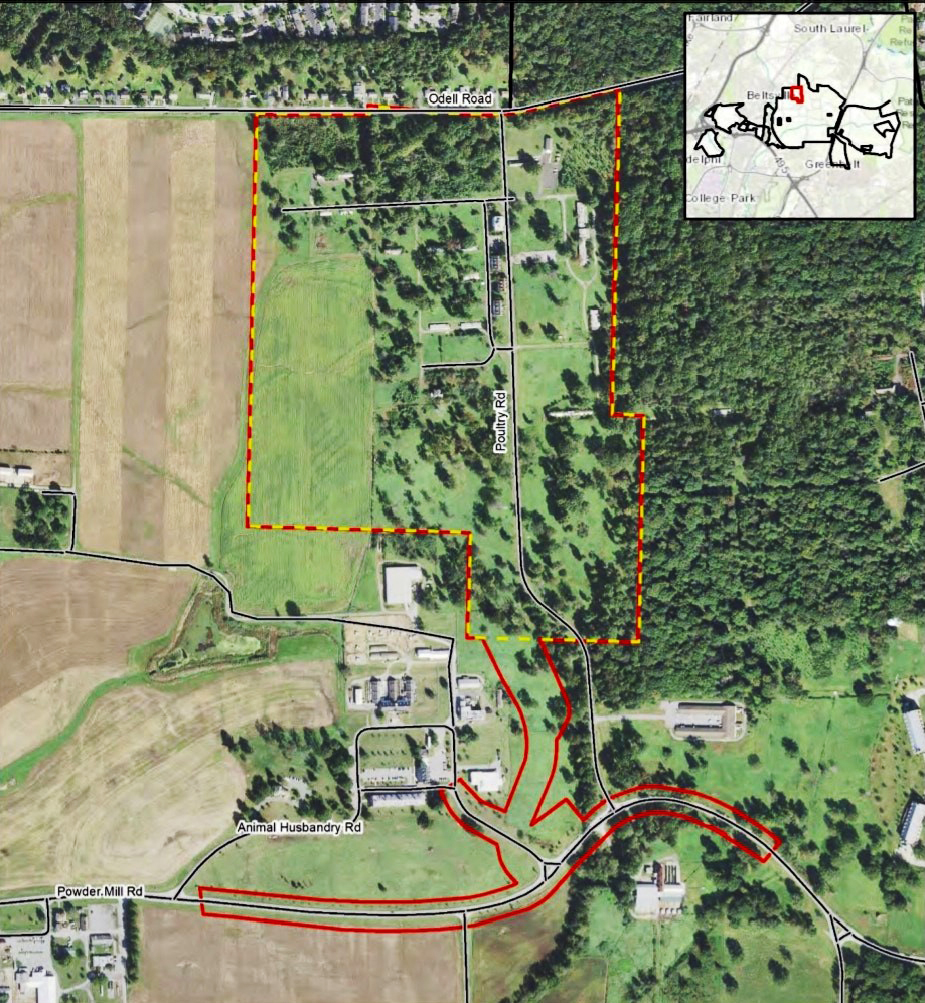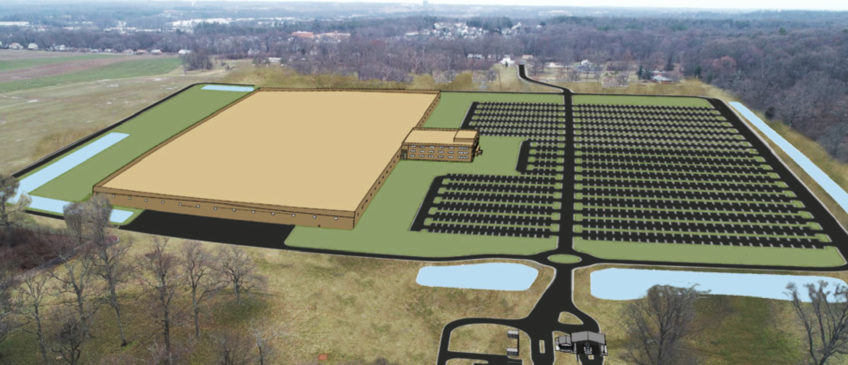The Final Environmental Impact Statement (EIS) for the proposed Bureau of Engraving and Printing (BEP) facility at the Beltsville Agricultural Research Center (BARC) was released on June 4. The EIS, prepared by the U.S Department of the
Treasury and the U.S. Army Corps of Engineers–Baltimore District in accordance with the National Environmental Policy Act of 1969 (NEPA), analyzes the potential environmental, cultural and socioeconomic impacts of the proposed project, and identifies mitigation measures.
The Final EIS corrects some errors and deficiencies identified in the Draft EIS (DEIS), and addresses or incorporates other comments submitted by the public in writing or stated in a virtual public meeting held on December 2, 2020. The public comments, many submitted by Greenbelt residents and by Community Planner Holly Simmons on behalf of the City of Greenbelt, were parsed into 506 distinct comments and grouped by the topic areas discussed in the EIS. The comments are presented, along with the response to each comment, and whether or not a change was made in the EIS in a table in Section 9.0.
Both a 316-page pdf version and a digital representation of the EIS, along with associated resource specific technical memoranda and other documents, can be accessed at nab.usace.army.mil/Home/BEP-Replacement-Project. A Spanish-language version of the EIS executive summary is also posted there. Printed copies of the EIS and supporting documents are available until July 6 at the Puente Library at Capitol Technology University, located at 11301 Springfield Road in Laurel. The library is open to the public, with no appointment necessary.
Hours are Mondays to Thursdays, 9 a.m. to 5 p.m.; Fridays, 9 a.m. to 1 p.m.; Saturdays and Sundays, closed.
The 30-day public review period ends on July 6. Public comments are not specifically requested as they were on the DEIS, but questions on the proposed project may be sent to Harvey Johnson, USACE–Baltimore District, Programs and Project Management Division at BEP-EIS@usace.army.mil.
Proposed Project
Treasury proposes to construct and operate a new, up to 1 million square-foot Currency Production Facility (CPF) on BARC to replace its existing production facility in downtown Washington, D.C. That facility, one of two CPFs operated by Treasury (the other is located in Fort Worth, Texas), was built in 1914, and its condition and design preclude its modernization to produce technologically sophisticated U.S. paper currency.
Site preparation and construction are proposed to start in 2021 or 2022. Treasury would gradually transition personnel and operations to the new CPF during 2025 to 2029. When fully operational, approximately 1,600 employees would work at the CPF in a round-the-clock weekday schedule of operation. All access to the CPF, including during construction, would be from Powder Mill Road.
The Site
The site, a 104-acre parcel at the north end of Poultry Road, is located about two miles north of the Greenbelt/BARC boundary on Research Road. Currently on the site is a cluster of buildings that were used for poultry research from 1914 to 2012, and have not been used or maintained since then, as well as scattered trees, grassland and some cropland.
Treasury identified and considered a number of potential sites on federal land in the National Capital region, and concluded that this site, known as the 200 Area, was the only one that met the selection criteria of at least 100 acres of suitable land within 10 miles of a major interstate and reasonably near an international airport. The Agriculture Improvement Act of 2018 authorized the U.S. Department of Agriculture to transfer this site to Treasury for the CPF.
EIS Considerations
Unlike the DEIS for the proposed SCMaglev Project, which presents several alternatives for route and station locations as well as the No Build alternative, this EIS considers only a No Action Alternative and the Proposed Action (i.e., the Preferred Alternative, construction of the CPF on the BARC site).
Many of the public comments on the DEIS criticized the site selection process, which only considered federal properties except seemingly those held by the Department of Defense. Some commenters believed that a suitable site could have been found on secure and already disturbed land on Fort Meade, while others chided Treasury for failing to consider former industrial or commercial land such as the site of the old Landover Mall.
The EIS acknowledges that implementation of the Proposed Action would result in potential significant adverse impacts to visual resources, water resources, environmental justice communities of concern, cultural resources, and traffic and transportation but states that all significant adverse impacts could be reduced to less-than-significant levels with implementation of recommended mitigation measures for each of these resource areas.
Record of Decision
Based on the analysis presented in the EIS, Treasury will prepare and execute its Record of Decision (ROD) – the final step in the NEPA process – announcing which Alternative is environmentally preferable, which Alternative it selects for implementation (be it the Preferred Alternative or the No Action Alternative) and which mitigation measures it will implement to reduce potential adverse impacts. The ROD is expected to be published before the end of this summer.


